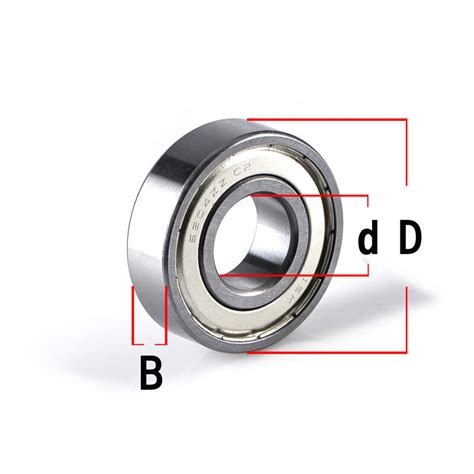The Essential Guide to Motorcycle Bearings: Enhance Performance and Safety
Introduction
Motorcycles are complex machines that rely on various bearings to function efficiently and safely. Bearings reduce friction, allowing components to rotate smoothly and with minimal resistance. Neglecting these crucial parts can lead to premature wear, reduced performance, and even catastrophic failures. Therefore, understanding motorcycle bearings and their maintenance is paramount. This comprehensive guide will delve into the types, functions, and maintenance of motorcycle bearings, empowering you to keep your ride in optimal condition.
Types of Motorcycle Bearings
1. Ball Bearings:
The most common type of bearing used in motorcycles. Ball bearings consist of an outer race, inner race, and a series of balls that roll between the two races, reducing friction. They are versatile and can handle both radial and axial loads.
2. Roller Bearings:

Similar to ball bearings, roller bearings use cylindrical rollers instead of balls. They are typically designed to withstand heavier loads and can handle more severe conditions.
3. Needle Bearings:
Needle bearings have a high load capacity in a compact design. They consist of a series of thin, needle-like rollers that reduce friction and allow for precise movement.
4. Thrust Bearings:
Thrust bearings are specifically designed to handle axial loads only. They prevent axial movement between components while minimizing friction.

Functions of Motorcycle Bearings
Bearings play a crucial role in various motorcycle components, including:

-
Wheels: Bearings allow the wheels to rotate smoothly, reducing friction and improving handling.
-
Engine: Bearings support the crankshaft, camshaft, and other moving parts, minimizing friction and wear.
-
Transmission: Bearings enable the gears to engage smoothly and reduce friction within the transmission system.
-
Steering: Bearings support the steering head and handlebars, allowing for precise and effortless steering.
-
Suspension: Bearings facilitate the movement of suspension components, providing a smooth and responsive ride.
Maintenance of Motorcycle Bearings
Adequate maintenance is essential to ensure the longevity and optimal performance of motorcycle bearings.
1. Inspect Bearings Regularly:
Inspect bearings visually and listen for any unusual noises during operation. Look for signs of wear, corrosion, or damage. Replace bearings as needed.
2. Lubricate Bearings Properly:
Use the correct lubricant and follow the manufacturer's recommendations for lubrication intervals. Proper lubrication reduces friction and extends bearing life.
3. Clean Bearings Occasionally:
Remove bearings from their housings periodically and clean them thoroughly to remove dirt, debris, and old grease. This prevents contamination and prolongs bearing life.
4. Tighten Bearings to Specifications:
Tighten bearings to the manufacturer's specified torque values. Over-tightening can damage bearings, while under-tightening can lead to premature wear and failure.
Benefits of Motorcycle Bearings
Investing in high-quality and properly maintained motorcycle bearings offers numerous benefits:
-
Enhanced Performance: Reduced friction improves acceleration, handling, and braking.
-
Increased Safety: Properly functioning bearings prevent component failures that could lead to accidents.
-
Extended Component Life: Bearings reduce wear and tear on other components, extending their lifespan.
-
Reduced Maintenance Costs: Regular bearing maintenance can save money in the long run by preventing costly repairs.
-
Improved Ride Comfort: Bearings contribute to a smoother and more comfortable ride experience.
Common Mistakes to Avoid
-
Ignoring Bearing Maintenance: Neglecting bearing maintenance can lead to premature wear and failure, costing you time and money.
-
Over-tightening Bearings: Excessive tightening can damage bearings and shorten their life.
-
Using Incorrect Lubricant: The wrong lubricant can break down or contaminate bearings, reducing their performance.
-
Riding with Damaged Bearings: Riding with worn or damaged bearings can compromise safety and lead to catastrophic failures.
-
Installing Bearings Incorrectly: Improper installation can cause early bearing failure and damage to other components.
Step-by-Step Bearing Installation
-
Remove the old bearing: Use a bearing puller to safely remove the old bearing from its housing.
-
Clean the housing: Remove any dirt, debris, or old grease from the bearing housing.
-
Lubricate the new bearing: Apply the recommended lubricant to the new bearing according to manufacturer's instructions.
-
Install the new bearing: Carefully insert the new bearing into the housing.
-
Tighten the bearing: Torque the bearing to the specified value using a torque wrench.
-
Reassemble the component: Reinstall the component that houses the bearing, ensuring proper alignment and fit.
Why Motorcycle Bearings Matter
Motorcycles are precision machines that rely on the smooth and efficient operation of their components. Bearings play a vital role in ensuring this by:
-
Reducing friction: Bearings allow components to rotate freely, minimizing friction between moving parts.
-
Increasing efficiency: Reduced friction means less energy is lost due to heat and wear, resulting in improved fuel economy and performance.
-
Extending component life: Bearings protect components from excessive wear, prolonging their lifespan and reducing maintenance costs.
-
Ensuring safety: Properly functioning bearings contribute to the overall safety of the motorcycle by preventing component failures and maintaining stability.
Conclusion
Motorcycle bearings are essential components that play a crucial role in performance, safety, and longevity. Understanding their types, functions, and maintenance is fundamental to keeping your motorcycle in optimal condition. By following the tips and guidelines outlined in this guide, you can ensure that your bearings perform at their best, maximizing the enjoyment and safety of your rides. Remember, regular maintenance and proper bearing usage are essential for a smooth, efficient, and safe motorcycle experience.

